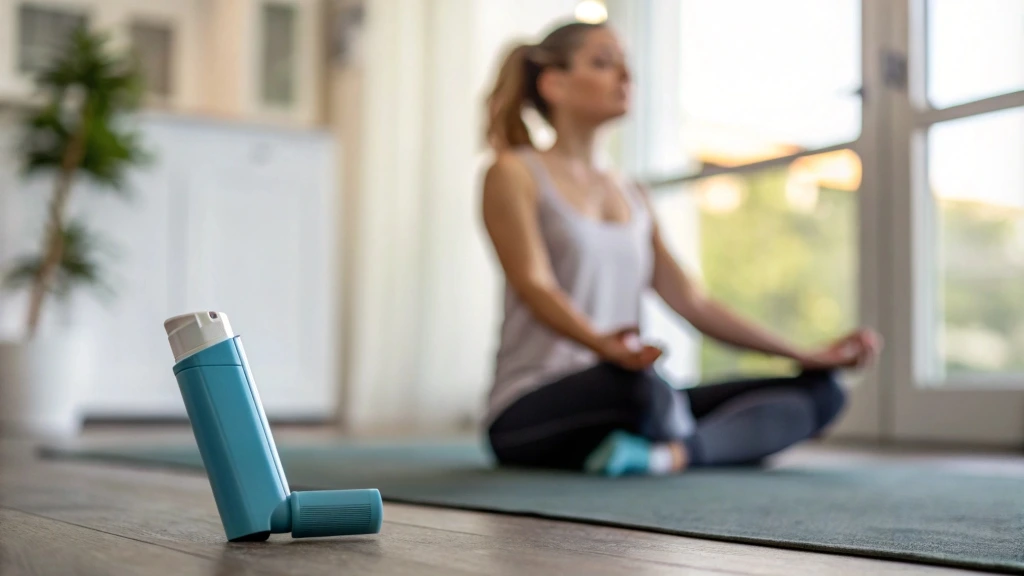Exercising with Asthma
Contrary to popular belief, exercise actually helps asthma. Some asthma sufferers avoid exercise because of its high risk of inducing an attack. That is understandable, but lack of exercise only worsens the condition. It increases the frequency and intensity of attacks.

How & Why Exercise Triggers Asthma Attacks
It is true that physical exertion can be an asthma-inducing trigger. In fact, it is the chief trigger for about 90% of asthma sufferers. Exercise is not the culprit here; it is the air, more particularly cold air, that triggers symptoms.
When you are at rest, or not physically exerting yourself, the air you breathe is warm, moist, and filtered by the cilia in the nose, sinuses, and lungs. The air enters the body slowly, and dust particles are more readily trapped by mucus in the airways.
During exercise, however, you breathe a lot faster, usually through the mouth (no filters there, mind you!). This brings dry, cool air to the lungs very quickly. As a result, the harsh air causes the airways to tighten, the bronchi inflame, and produces excess mucus, narrowing the airways to make breathing difficult, prompting a full-on attack in asthma sufferers with the regular symptoms of coughing and wheezing that follow.
This process or effect is the same even for non-asthma sufferers. I suffer the same symptoms playing soccer outdoors in the cold of winter. With proper control, you can perform better and live like a non-sufferer. Jackie Joyner-Kersee, Isaiah Thomas, and Dennis Rodman are perfect examples of elite athletes who got asthma under control to perform even better than us non-sufferers!
How to Exercise with Asthma
First, you want to ensure you have proper breathing techniques. Practice deep breathing so you get accustomed to it and therefore get more air into the body. Here’s how:
- Sit or lie down comfortably.
- Place one hand on your chest and the other on your abdomen.
- Take a slow, deep breath through your nose, ensuring the diaphragm (not the chest) inflates with enough air to create a stretch in your lungs.
- Exhale slowly through the mouth.
Then, before you exercise, get a lung function test to measure how much air you are able to exhale, and how quickly. Lung function tests confirm the presence of airway obstruction that improves with asthma treatment.
On the day of exercise, make sure you are feeling well, or there is no symptom, however mild, of an attack.
Measure your peak flow with a peak flow meter (peak flow meters measure lung capacity). If your peak flow is less than 80, do not exercise.
Tips for Safe Exercising with Asthma

- Avoid Bad Weather: If the weather outside is foggy, cold, or there is generally poor air quality and you set off to run a 5k, you are simply asking for it.
- Warm Up Thoroughly: Warm up slowly and thoroughly before exercise. Stretch, breathing deeply to enhance the stretch. Follow up with a more comprehensive stretch after exercise.
- Stay Hydrated: Drink plenty of water. This should be a given, but most asthma sufferers “forget” to hydrate during exercise. Hydration relieves bronchial dilation from dry air and makes for proper circulation and elimination of toxins that could constitute a risk. See more on hydration here.
- Use Your Inhaler: Use your inhaler before exercise, and keep it close during exercise.
- Stop if Necessary: If you experience an attack, stop. Use your inhaler; sit up straight. When the attack subsides, you may choose to continue. Stop completely if you have a second attack. Your teammates will have to continue the game without you at that point!
Best Exercises for Asthma Sufferers
| Exercise Type | Benefits | Tips |
|---|---|---|
| Swimming | Low impact, humid air | Avoid chlorinated pools if sensitive |
| Yoga | Improves breathing control, reduces stress | Focus on breathing exercises and gentle poses |
| Walking | Low intensity, can be done indoors | Start slow and gradually increase pace |
| Cycling | Low impact, can be done indoors | Use a stationary bike to control environment |
| Tai Chi | Gentle movements, improves lung function | Focus on breathing and slow, controlled movements |

Exercising with Asthma FAQs
Q: Can I exercise if I have asthma?
A: Yes, exercise can actually help manage asthma symptoms. Regular physical activity improves lung function and overall health.
Q: What should I do if I experience an asthma attack during exercise?
A: Stop exercising immediately. Use your inhaler and sit up straight. If the attack subsides, you may continue exercising. If you experience a second attack, stop completely and seek medical attention if necessary.
Q: Are there any exercises I should avoid?
A: Avoid high-intensity exercises in cold or dry air, such as running outdoors in winter. Opt for indoor activities or low-impact exercises like swimming or yoga.
Q: How can I prepare for exercise if I have asthma?
A: Ensure you have proper breathing techniques, use your inhaler before exercise, warm up thoroughly, and stay hydrated. Also, monitor your peak flow and avoid exercising if it is below 80.
Q: Can I play team sports with asthma?
A: Yes, many athletes with asthma participate in team sports. Just make sure to follow the guidelines for safe exercising and have your inhaler readily available.
Q: What should I do if I feel symptoms coming on during exercise?
A: Stop exercising and use your inhaler. If symptoms persist, seek medical attention. Always listen to your body and prioritize your health.
Conclusion
Control asthma, don’t let it control you. Respiratory health, and of course exercise, is key to overall physical health. Inactivity only makes the condition worse. Of course, talk to your doctor before engaging in any physical exerting regimen. Remember, the goal is to thrive… not just survive!